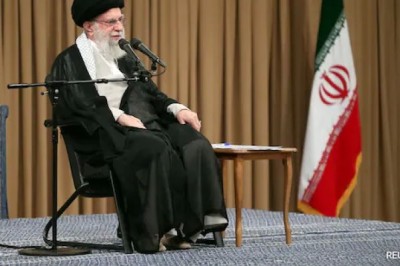Hare Krishna Mandir: A Hub of Spiritual Learning and Cultural Heritage in Ahmedabad
The Hare Krishna Mandir in Ahmedabad, an important ISKCON centre, is a vibrant space for spiritual learning, community interaction, and devotional activities. With teachings from the Bhagavad Gita, kirtans, youth initiatives, and cultural celebrations, it promotes inner tranquility, personal development, and a sense of togetherness in a peaceful and uplifting environment.
Hare Krishna Mandir: A Spiritual and Cultural Landmark in Ahmedabad
The Hare Krishna Mandir in Ahmedabad, a significant center of the International Society for Krishna Consciousness (ISKCON), plays a pivotal role in spreading spiritual knowledge and Krishna Consciousness. This serene temple, situated amidst the city's bustling landscape, has become a refuge for those seeking spiritual peace, a sense of community, and a deeper understanding of the Bhagavad Gita.
Philosophy and Core Teachings
The activities at the Hare Krishna Mandir are deeply rooted in the teachings of the Bhagavad Gita, a timeless spiritual scripture from the Mahabharata. The Gita addresses profound questions about existence, morality, and life’s purpose, offering practical guidance for overcoming challenges, harmonizing material duties with spiritual goals, and achieving self-realization.
The concept of bhakti or devotional service is central to Krishna Consciousness and forms the foundation of the temple’s teachings. Through structured lectures, discussion forums, and interactive sessions, the temple ensures that these principles are accessible to modern audiences. Participants gain insights into the relevance of the Gita’s teachings in addressing daily challenges like stress, decision-making, and personal development, encouraging thoughtful reflection and dialogue.
The Practice of Chanting and the Maha-Mantra
A defining practice at the Hare Krishna Mandir is the chanting of the maha-mantra:
“Hare Krishna, Hare Krishna, Krishna Krishna, Hare Hare; Hare Rama, Hare Rama, Rama Rama, Hare Hare.”
This ancient mantra is believed to purify the mind and heart, fostering a deeper connection with the divine. Congregational chanting, or kirtan, is a vital part of the temple’s devotional activities. Accompanied by traditional instruments such as the mridanga (drum) and kartals (cymbals), these sessions create a vibrant atmosphere of joy and devotion, uniting participants in a shared spiritual experience. Many attendees describe kirtans as uplifting and transformative, providing a profound sense of peace and connection amidst the chaos of daily life.
Spiritual Education and Bhakti Yoga
The temple adopts a systematic approach to spiritual education, offering workshops and courses suitable for all age groups and levels of understanding. Topics include the essence of the Bhagavad Gita, the science of devotion, and practical applications of Vedic wisdom in daily life.
Additionally, the temple provides guidance on bhakti yoga, a spiritual practice combining devotion, meditation, and service. Led by experienced devotees, these programs equip participants with tools for navigating life’s complexities while nurturing inner peace and purpose.
Engaging Youth and Families
Recognizing the importance of inspiring future generations, the temple conducts specialized youth programs that integrate spirituality with life skills. These initiatives feature leadership training, discussions on ethical decision-making, and activities that instill values such as compassion and respect.
Children are engaged through storytelling, arts, and interactive sessions that introduce them to Krishna Consciousness in an enjoyable and relatable way. Family retreats and counseling sessions provide opportunities for families to strengthen their bonds and deepen their spiritual foundation in a supportive environment.
Community Involvement and Social Harmony
The Hare Krishna Mandir serves as a center for community engagement, promoting inclusivity and mutual respect through interfaith dialogues, cultural festivals, and social service initiatives.
Major festivals such as Janmashtami, Ratha Yatra, and Holi are celebrated with grandeur, attracting diverse audiences. These events combine spiritual discourses, cultural performances, and traditional rituals, creating a shared experience of joy and devotion. By fostering a sense of community, the temple helps individuals form meaningful relationships and support networks.
Architecture and Tranquility
The temple’s intricate architecture and serene gardens reflect its spiritual purpose, offering a peaceful retreat for meditation and introspection. Visitors often describe the temple as a haven where they can escape the demands of urban life and reconnect with their inner selves.
Conclusion
The Hare Krishna Mandir in Ahmedabad is far more than a place of worship—it is a beacon of spiritual education, cultural preservation, and community building. By sharing the wisdom of the Bhagavad Gita, encouraging devotional practices, and fostering unity, the temple provides a pathway to inner peace, spiritual growth, and a harmonious life.











